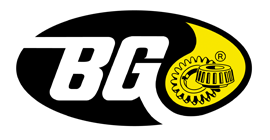
Archive for December 2022Shifty Letters PRNDL (Transmission)Posted December 25, 2022 9:24 AMYou probably figured out those shifty letters. They're what you see on your automatic transmission shifter and stand for Park, Reverse, Neutral, Drive and Low. Your automatic transmission is one of the great automotive inventions; here are some ways you can keep yours working well. Maintain your transmission regularly. A technician will check your transmission fluid's level and even its appearance and smell. If it's dark or has an unusual odor, that could be a sign of trouble. Change from one transmission direction gear into another only when your vehicle is stopped. So many drivers want to switch from Reverse to Drive quickly or the other way around. If you do that when the vehicle is moving, you can damage your automatic transmission. Keep your vehicle's cooling system in top shape. What does the cooling system have to do with the transmission? It helps keep the transmission fluid from overheating. Follow the manufacturer's recommendations for maintaining your transmission. Some recommend at least an annual checkup by a trained technician. Let your powertrain warm up a little before overtaxing it. Especially in cold weather, don't step on the throttle too aggressively before all components are warmed up. That way both your engine and transmission will last longer. Transmissions can be costly to fix. If you treat your powertrain with respect and regularly maintain it, you'll not only avoid expensive repairs, but you’re also much less likely to find yourself stranded because of a transmission problem. Auto Authority LLC Snake in the Engine (Serpentine Belt)Posted December 18, 2022 9:27 AMThere's a belt that snakes through your engine. It's even named for a snake, the serpentine belt. It'll bite you when it breaks, possibly leaving you stranded. So, it's good to know a little about this snake-like belt. In early engines, there were lots of belts. They were used to convert the rotating power of the engine to turn a mechanical part. But engineers had an idea. Why not consolidate all those belts into one that ran a bunch of different parts simultaneously? Voila! The serpentine belt. It's found in the front or side of your engine unlike older belts which were often in a V shape, the serpentine belt has ribs on it which more effectively connect with the pulleys that power the other components. A serpentine belt may power the water pump, power steering pump, alternator, and the air conditioning: all from one crankshaft. Now, all that's fine when everything is working well and the belt is intact. But when a serpentine belt wears, gets loose, or breaks, it can affect many engine components at once. Not an ideal situation. If you hear squeals coming from the engine compartment, see a battery light, or the engine overheats, those could be signs that your serpentine belt needs replacing. The good news is that they usually last a long time, from 60,000-100,000 miles or 100,000-160,000 km. Still, they don't last forever, and your vehicle's manufacturer usually recommends replacing them when they've gone close to the expected maximum. It’s also recommended that you replace the pulleys and belt tensioner at the same time as they have the same service life. Regular maintenance and inspection of the serpentine belt is not only a good idea; it’s one of those things that you should not let "slip" by. Auto Authority LLC Keeping Your Cool (Coolant System)Posted December 11, 2022 11:41 AMNo matter what the weather is like outside, your internal combustion engine expects to keep its cool all the time, even when it's really cold. That's because engines create the power that moves you to your destination by a series of tiny explosions of a fuel and air mixture. In turn, that generates a lot of heat in a small space. Your vehicle has a complete cooling system with a lot of different parts that work together to keep the temperature at a point where the metal engine parts won't heat up enough to warp. Its lifeblood is coolant, a liquid that circulates through the engine (and, in most vehicles, the transmission, too) through a series of hoses and tubes. In order to get rid of the coolant's heat, your vehicle has a part you probably recognize: the radiator. It does what its name proclaims: radiates heat. The radiator has a series of thin metal fins that coolant goes through, and when outside air passes over them, the heat is dissipated from the radiator into the air. The water pump (which is technically a coolant pump) is what propels the coolant where it needs to go. When there's a problem in the coolant system, it may because it's leaking somewhere. A few things to look out for are the temperature gauge heading into the hot, or red, zone, fluid leaks under your vehicle, or the sweet smell of coolant under your vehicle after it's been parked. If your vehicle has any of those signs, bring it in so we can check things out. A technician will inspect the water pump and hoses for any signs of leaks. They'll also look for leaks or holes in the radiator core or cores. One other potential trouble spot is the radiator cap that can sometimes fail to keep the required pressure in the radiator. Once the problems are fixed, they'll add the correct coolant and you'll be on your way. We want you to always keep your cool. Auto Authority LLC
A Clean Start (Battery Cleaning)Posted December 4, 2022 11:54 AMYour vehicle is loaded with electrical devices. Computerized components are everywhere, so good electrical connections are important. Those begin with your vehicle's battery, so it's important that its connections are in top shape. Ever had a flashlight that didn't work, took out the old batteries to replace them and noticed the old batteries were all corroded? The same thing can happen to your vehicle's battery. The battery type used in most vehicles is a lead-acid, which can be very corrosive. Corrosion can build up around your battery's terminals that can prevent the electrical connection from being as solid as it needs to be. You may have even seen discoloration around your battery's terminals if you look under the hood, a sign of corrosion. Or you might notice visible signs of fraying or loose battery cables. All of your vehicle's components are affected by vibrations from the engine and road surface imperfections, and the battery cables take a lot of jostling every time you drive. Frayed cables won't conduct as much electricity as intact ones. Plus, there's the possibility that a frayed cable may touch a piece of metal in the engine compartment that can cause shorts and other problems. There are some signs to watch out for that might tell you if your battery terminals are corroded or your cables aren't making good contact with them. You might find your vehicle isn't starting as easily as it used to. You also might see the battery warning light illuminated on your dash. That light looks like a rectangle with a "-" and "+" sign inside. Our technicians can make sure your battery and cables are at optimal operating capability with regular service and cleaning. A technician will clean the terminals and portions of the cables that are connected to them. They may also add an anti-corrosion agent to the cables/terminals. Nothing like giving your vehicle a clean start! Auto Authority LLC | ||
SearchArchiveNovember 2011 (5)December 2011 (4) January 2012 (5) February 2012 (3) March 2012 (5) April 2012 (4) May 2012 (4) June 2012 (5) July 2012 (5) August 2012 (4) September 2012 (4) October 2012 (4) November 2012 (5) December 2012 (4) January 2013 (4) February 2013 (5) March 2013 (4) April 2013 (4) May 2013 (4) June 2013 (4) July 2013 (5) August 2013 (4) September 2013 (4) October 2013 (4) November 2013 (4) December 2013 (5) January 2014 (4) February 2014 (4) March 2014 (4) April 2014 (4) May 2014 (5) June 2014 (4) July 2014 (5) August 2014 (4) September 2014 (5) October 2014 (4) November 2014 (4) December 2014 (5) January 2015 (4) February 2015 (4) March 2015 (4) April 2015 (5) May 2015 (2) June 2015 (6) July 2015 (4) August 2015 (4) September 2015 (4) October 2015 (5) November 2015 (4) December 2015 (3) February 2016 (2) March 2016 (4) April 2016 (4) May 2016 (5) June 2016 (4) July 2016 (5) August 2016 (4) September 2016 (4) October 2016 (5) November 2016 (4) December 2016 (4) January 2017 (5) February 2017 (4) March 2017 (4) April 2017 (5) May 2017 (4) June 2017 (4) July 2017 (4) August 2017 (5) September 2017 (3) October 2017 (5) November 2017 (4) December 2017 (3) January 2018 (5) February 2018 (3) March 2018 (4) April 2018 (5) May 2018 (3) June 2018 (4) July 2018 (5) August 2018 (4) September 2018 (5) October 2018 (4) November 2018 (4) December 2018 (1) March 2019 (3) April 2019 (33) May 2019 (4) June 2019 (5) July 2019 (4) August 2019 (4) September 2019 (5) October 2019 (4) November 2019 (4) December 2019 (5) January 2020 (5) February 2020 (4) March 2020 (5) April 2020 (2) May 2020 (2) June 2020 (1) July 2020 (1) August 2020 (5) September 2020 (4) October 2020 (4) November 2020 (5) December 2020 (4) January 2021 (6) February 2021 (4) March 2021 (4) April 2021 (4) May 2021 (5) June 2021 (4) July 2021 (4) August 2021 (5) September 2021 (4) October 2021 (5) November 2021 (3) December 2021 (5) January 2022 (6) February 2022 (4) March 2022 (4) April 2022 (4) May 2022 (5) June 2022 (4) July 2022 (5) September 2022 (4) October 2022 (5) November 2022 (4) December 2022 (4) January 2023 (5) February 2023 (4) March 2023 (4) April 2023 (5) May 2023 (4) June 2023 (4) July 2023 (5) August 2023 (4) September 2023 (3) October 2023 (1) January 2024 (1) February 2024 (4) | CategoriesAir Conditioning (18)Alignment (16)Alternator (6)Auto Safety (6)Automotive News (11)Battery (20)Brake Service (4)Brakes (22)Cabin Air Filter (8)Check Engine Light (6)Cooling System (19)Customer Detective Work (1)Dashboard (3)Diagnostics (5)Diesel Maintenance (2)Differential Service (3)Drive Train (9)Emergency Items (1)Engine Air Filter (2)Exhaust (12)Fluids (19)Fuel Economy (10)Fuel Pump (1)Fuel Saving Tip: Slow Down (2)Fuel System (47)Headlamps (7)Inspection (11)Keys to a long lasting vehicle (4)Maintenance (60)Monitoring System (3)Oil Change (7)Older Vehicles (4)Parts (8)PCV Valve (2)Safe Driving (1)Safety (7)Serpentine Belt (6)Service Intervals (9)Service Standards (13)Shocks & Struts (10)Shocks and Struts (1)Spark Plugs (2)Steering (14)Suspension (3)Timing Belt (6)Tire Pressure Monitoring System (1)Tire Rotation and Balancing (4)Tires (10)Tires and Wheels (42)TPMS (3)Transfer Case Service (1)Transmission (11)Trip Inspection (4)Warranty (1)Water Pump (1)What Customers Should Know (81)Wheel Bearings (2)Windshield Wipers (9)Winter Prep (7)Winter Tires (1) | |
Partners








What our clients are saying about us
We have established longterm and stable partnerships with various clients thanks to our excellence in solving their automotive needs!
Absolutely the best mechanic I have ever been to in my 40 years on this planet. Honest, trustworthy, and reliable. I will definitely be back.

These Guys (and Gals!) are great. Love them. Trust them. If you are looking for a REPUTABLE mechanic for your car or truck, look no more. Just go there and see what I mean.

